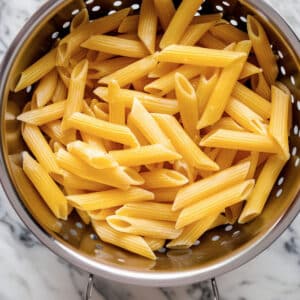Small details can make a big difference in preparing food's final product. One such point is how you cut or chop your ingredients. Have you ever considered the differences between grated and shredded food? While these terms are often used interchangeably, they refer to two different techniques.
Knowing the difference between grated vs shredded can elevate your cooking skill, whether you are a home cook or a professional chef. This article will discuss the differences between grated and shredded and explore the pros, cons, and best ways to use each method in the kitchen. So grab your graters and shredders, and let's dive into food prep!
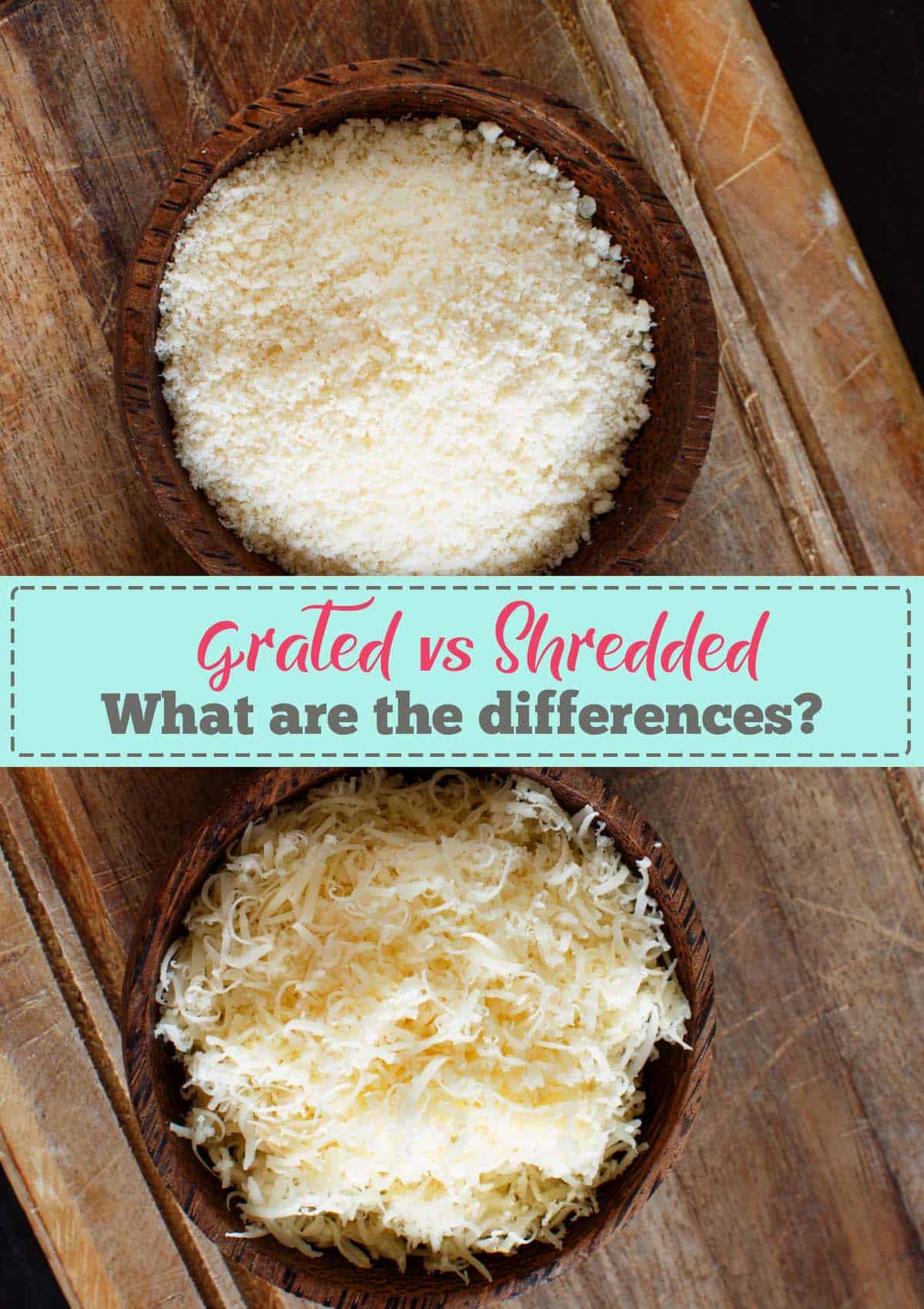
Grating vs Shredding: an Overview
When preparing ingredients for cooking, grating and shredding are two common methods used to break down solid foods into smaller pieces. While both techniques involve using a tool to cut the food into thin strips or strips, there are some notable differences between grated and shredded ingredients.
What is Grating?
Grating breaks down solid foods, such as vegetables, cheese, and nuts, into small, thin strips or strips. This is typically done using a grater, a kitchen tool with sharp, ridged blades that can slice through food. Graters come in various sizes and shapes, the most common being a box grater or a handheld grater.
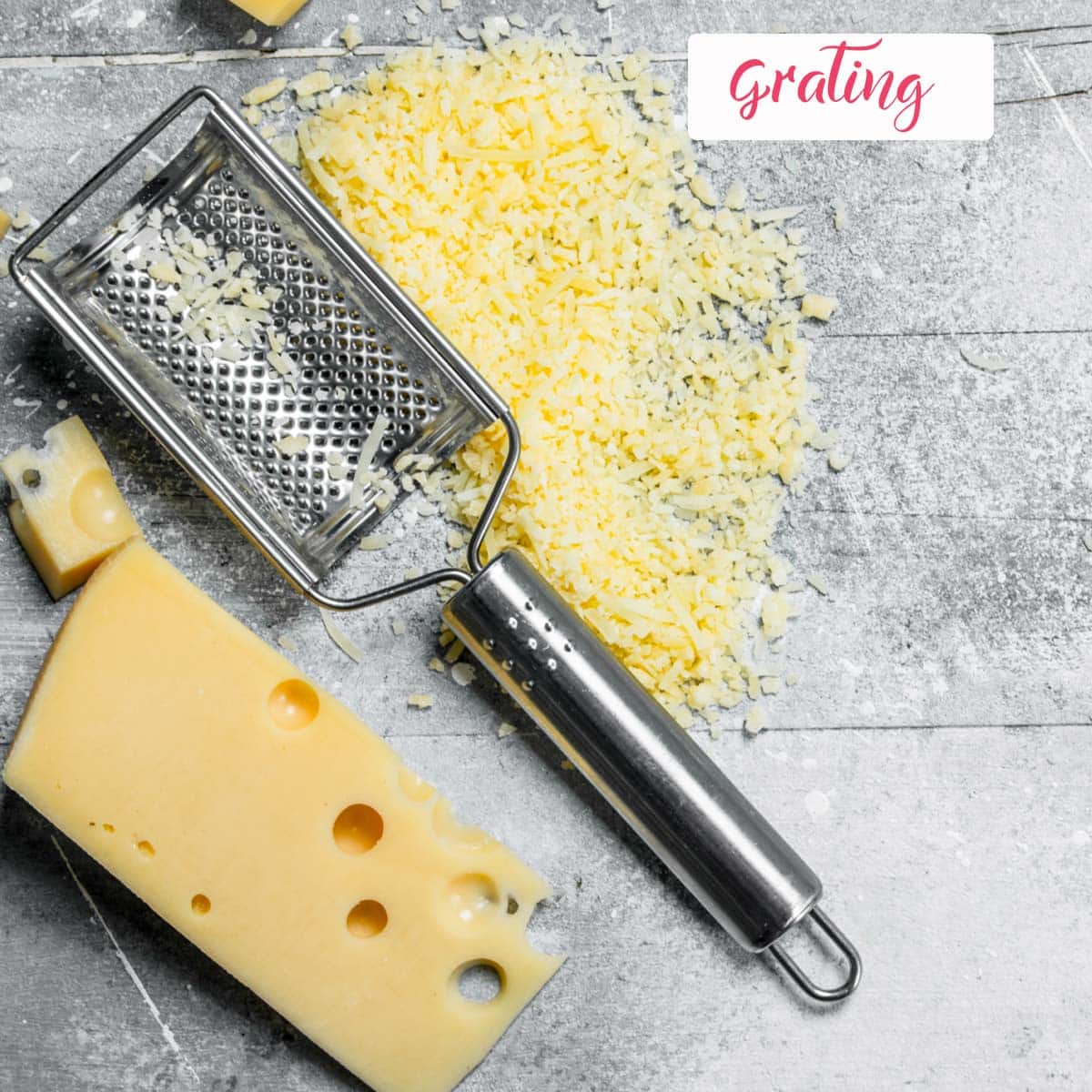
Grated ingredients are typically finer than shredded ingredients, as the blades of a grater are designed to create thin strips of food. Grated ingredients generally are used as a garnish or as a base for dips and spreads. They also add texture and flavor to dishes such as salads, soups, and casseroles.
What is Shredding?
Shredding cuts solid foods, such as meats, vegetables, and cheese, into long, thin strips or pieces. This is typically done using a shredder, a kitchen tool with a series of sharp blades that can slice through food. Shredders come in various sizes and shapes, the most common being a handheld shredder or a stand mixer attachment.
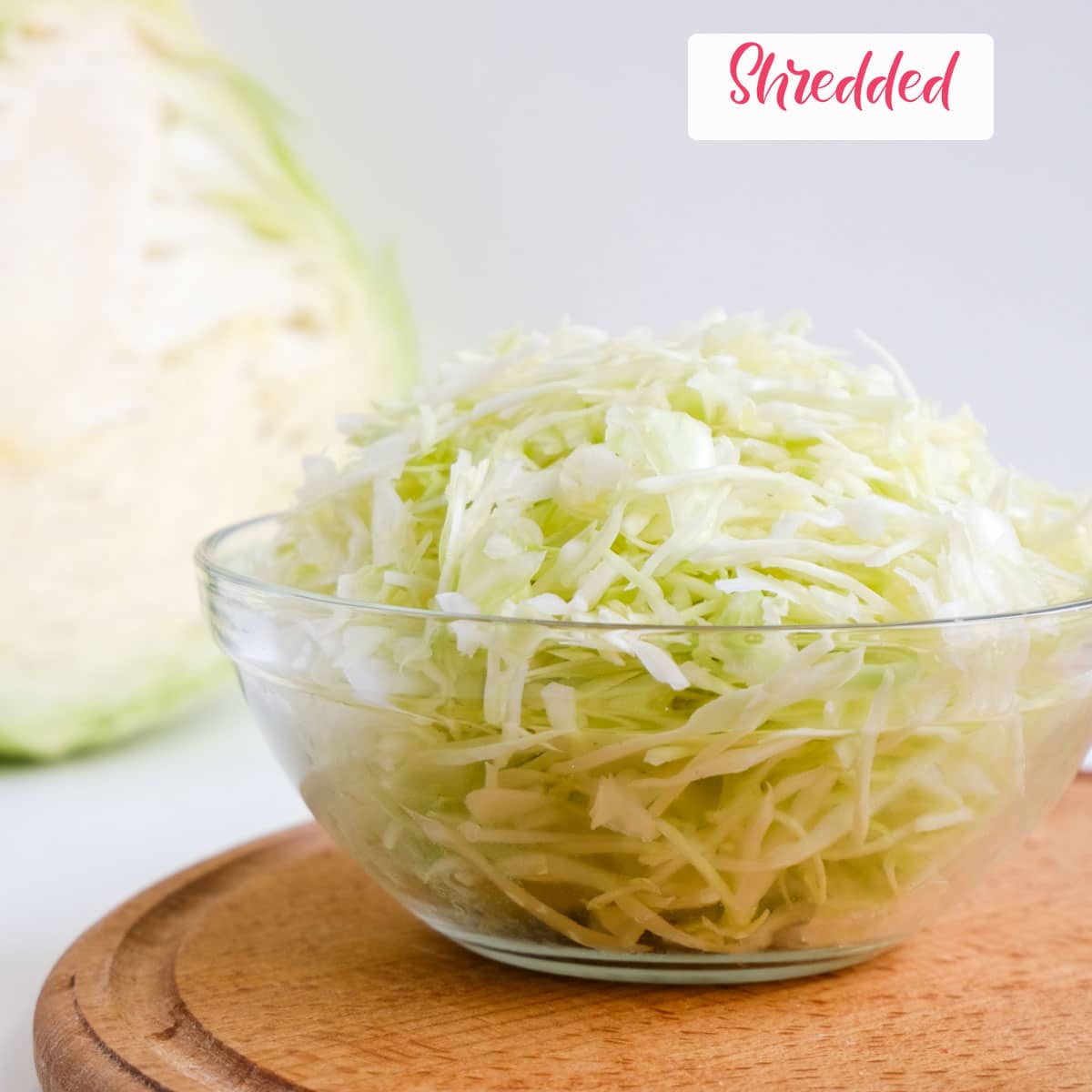
Shredded ingredients are usually coarser than grated ingredients, as the blades of a shredder are designed to create longer, thicker strips of food. Shredded ingredients are often used in sandwiches, salads, and casseroles. They can also be used as a garnish or as a base for dips and spreads.
Key differences between Grated vs Shredded ingredients
Grated and shredded ingredients refer to how food is cut or prepared. Grating involves using a tool, such as a grater or a Microplane, to shave off thin strips or shards of food. By shredding, food is cut into long, thin strips or pieces.
Here are some key differences between grated vs shredded ingredients:
| Property | Grated | Shredded |
|---|---|---|
| Definition | Finely chopped or ground into small pieces using a grater. | Thinly sliced or cut into small strips using a shredder. |
| Appearance | Fine, evenly sized pieces that are similar in size to sand or breadcrumbs. | Long, thin strips that are similar in size to confetti. |
| Texture | Smooth, fine and uniform. | Coarse, uneven and varied in size and shape. |
| Preparation Time | Time-consuming, especially for hard, dense foods. | A bit faster than grating, if done using a food processor. |
| Usages | Used as toppings on pizza or desserts. Used as a base for sauces or dips. | Used as a garnish or toppings or as a base for salads or slaws. |
| Storage | Be stored in an airtight container in the refrigerator. | Be stored in an airtight container in the refrigerator. |
| Shelf Life | May not last as long as their whole counterparts. | Have a shorter shelf life than their whole counterparts. |
| Equipment | Requires a grater or food processor. | Requires a shredder or knife. |
| Popular foods | cheese, carrots, and nutmeg. | Cheese, chicken, and cabbage. |
| Versatility in Cooking | Used in baking, frying, sautéing, and grilling. | Used in baking, frying, sautéing, and grilling. |
- Texture: Grated ingredients tend to have a finer, more uniform texture, while shredded ingredients may have a more varied texture depending on how they are cut or torn.
- Size: Grated ingredients are typically smaller and finer than shredded ingredients.
- Tools: Grated ingredients are typically prepared using a grater or a Microplane, while shredded ingredients can be prepared using various tools, such as a knife, a food processor, or a mandoline slicer.
- Uses: Grated ingredients are often used as a garnish or topping for dishes, while shredded ingredients are commonly used as a filling or as a base for dishes, such as salads or slaws.
- Preparation time: Grating typically requires less preparation than shredding, as it can be done quickly with a grater or Microplane. Shredding may take longer, especially if using a knife or other manual tool to cut the food into thin strips.
- Storage: Grated ingredients may be more prone to drying out or clumping together when stored, depending on the type of food. Shredded ingredients may be more inclined to wilt or lose their texture when stored, especially if they are leafy greens or other delicate ingredients.
- Shelf life: Grated and shredded ingredients may have different shelf lives depending on the type of food and how it is stored. Grated ingredients may have a shorter shelf life due to their smaller size and increased surface area, making them more prone to spoilage. Shredded ingredients may have a longer shelf life, especially if stored in an airtight container or bag.
- Equipment used: Grating typically requires a grater or Microplane, while shredding can be done with various tools, including a knife, food processor, or mandoline slicer. The choice of equipment may depend on the type of food being prepared and the desired texture and size of the finished product.
Read:
Grating vs Shredding: Pros and Cons
There are pros and cons to both grating and shredding ingredients. Here's a summary of the main points:
Pros of grating ingredients:
1 Allows for more even distribution and incorporation into a dish.
Grating ingredients allows for more even distribution and incorporation into a dish because it reduces the size and uniformity of the components. By grating ingredients, they become much smaller and more uniform, allowing them to mix more evenly with other ingredients. This creates a more cohesive final product, as all ingredients are evenly distributed and incorporated throughout the dish rather than being clumped together or unevenly distributed.
2 Speed up cooking time.
Grating ingredients can speed up cooking time by creating smaller and more uniform pieces of the ingredient, allowing them to cook faster due to their increased surface area. Grating reduces ingredients to a finer consistency, increasing the surface area exposed to heat. This allows the ingredient to cook more quickly, as heat can penetrate the smaller pieces more easily. This can be especially useful when cooking dishes that require long cooking times, such as soups or stews, as grating the ingredients can help to reduce the overall cooking time.
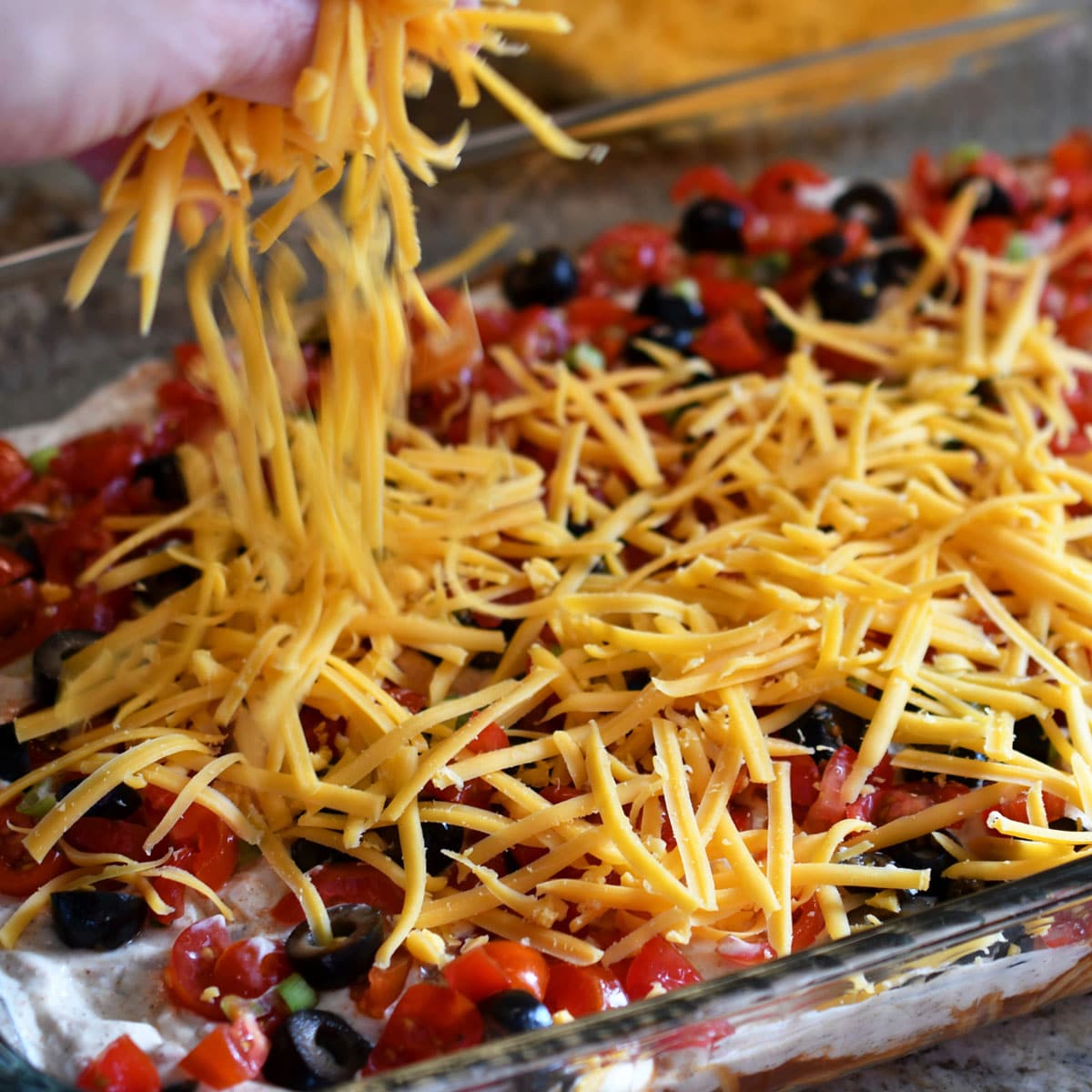
3 Improve texture.
When ingredients are grated, they are reduced to a much finer consistency, which can be more desirable in certain dishes. For example, grating hard vegetables like carrots or parsnips can create a fine, smooth texture that may be more appealing in certain dishes, such as purees or sauces. The grating can also help to break down ingredients, making them easier to incorporate into the dish and creating a more cohesive final product.
4 Add more surface area for flavor.
When ingredients are grated, they are reduced to a much finer consistency, which increases the surface area exposed to the flavors in the dish. This allows for a more intense and well-rounded taste, as the flavors can penetrate the smaller pieces of the ingredient. This can be especially useful when working with ingredients that may have a more subtle flavor, such as cheese or nuts, as grating them can help to intensify the flavor and make it more prominent in the final dish.
5 Make ingredients easier to digest.
Grating ingredients can make them easier to digest because it creates smaller and uniform pieces that are easier for the body to digest. Grated ingredients have a finer consistency, which helps to break down the fibers and allows the body to absorb them more easily.
This can be particularly useful for those with digestive issues or sensitivities, as grated ingredients may be easier for the body to break down and absorb. Additionally, grating ingredients can also help to improve the texture of the dish, making it easier to chew and swallow, which can also aid in digestion.
Read:
The cons of grating ingredients:
There are a few potential drawbacks to grating ingredients:
- Messy: Grating ingredients can be messy, especially if you are grating many ingredients or using a handheld grater.
- Time-consuming: Completing the process can take significant time if you grate many ingredients. It can be time-consuming to grate ingredients by hand, using a food processor, or to use an electric grater.
- Risk of injury: Using a grater can pose a risk of injury, primarily if you use a handheld grater or if the grater has sharp blades.
- Difficulty grating certain ingredients: Some ingredients may be difficult to grate, especially if they are hard or dense. This can make the grating process more challenging and time-consuming.
- Risk of over-processing: If you are using a food processor or blender to grate ingredients, there is a risk of over-processing the ingredients, which can result in a mushy or unappealing texture.
- Limited uses: Grating is not a suitable method for preparing all ingredients. For example, preparing soft or delicate ingredients like berries or leafy greens would not be practical.
- Waste: Grating can result in a significant amount of waste, especially if you are grating ingredients with a tough outer layer, such as carrots or potatoes.
- Loss of nutrients: Some nutrients may be lost during the grating process, especially if you are grating ingredients high in water, such as cucumbers or zucchini.
- Change in texture: Grating can change the texture of ingredients, which may not be desirable in some dishes. For example, grating carrots may result in a softer, more shredded texture than if you were to slice or chop the carrots.
- Limited control over size and shape: Grating ingredients may result in a uniform size and shape, which may not be desirable in all dishes. For example, grating may not be the best method if you make a salad and want different sizes and shapes of vegetables.
The Pros of Shredding:
There are several benefits to shredding ingredients:
- Improved texture: Shredding ingredients can help to create a more cohesive and evenly distributed texture in dishes. For example, shredding vegetables can help them to cook more evenly and be more easily incorporated into a dish.
- Faster cooking time: Shredded ingredients often cook faster than whole or chunkier ingredients. This can be especially useful when cooking dishes that require a short cooking time, such as stir-fries or salads.
- Improved presentation: Shredded ingredients are often more visually appealing than whole or chunkier ingredients. This can be especially useful when presenting dishes for a crowd or on special occasions.
- Ease of use: Shredded ingredients are often easier to measure and handle than whole or chunkier ingredients. This can do cooking and baking more efficient and less messy.
- Increased surface area: Shredding ingredients increase their surface area, allowing for more even cooking and improved absorption of flavors and marinades. This can enhance the overall taste and flavor of a dish.
- Variety of uses: Shredded ingredients can be used in a wide range of dishes, from soups and stews to sandwiches and wraps, and can be a great way to add flavor and nutrition to various meals.
- Improved nutrient absorption: Shredding ingredients can help to make nutrients more readily available for the body to absorb. For example, shredding vegetables can help break down their cell walls, making it easier for the body to access nutrients.
- Enhanced flavor: Shredding ingredients can help release more of their natural flavors and aromas, enhancing a dish's overall taste and flavor.
- Easier to mix: Shredded ingredients are often easier to mix and incorporate into a dish, especially when compared to whole or chunkier ingredients. This can be especially useful when making dishes that require a homogenous mixture, such as meatballs or patties.
- Ease of storage: Shredded ingredients often take up less space and are easier to store than whole or chunkier ingredients, making them a convenient choice for busy cooks and those with limited storage space.
The Cons of Shredding:
While shredding ingredients can have many benefits, there are also some potential drawbacks to consider:
- Increased prep time: Shredding ingredients can be time-consuming, especially if you shred many ingredients. Or if you are shredding ingredients that are difficult to shred, such as dense or fibrous vegetables.
- Risk of uneven shredding: Depending on the tool you are using to shred ingredients, it can be difficult to achieve an even shred. This can lead to uneven cooking and texture in your finished dish.
- Risk of over-processing: Shredding ingredients can cause them to become over-processed, which can lead to a loss of texture and flavor. This can be especially noticeable in dishes where the main component is shredded ingredients, such as coleslaw or pulled pork.
- Risk of food waste: Shredding ingredients can generate a significant amount of food waste, especially if you are shredding ingredients with a lot of tough or inedible parts, such as the stems of leafy greens or the peel of a hard-skinned fruit.
- Risk of injury: Using a sharp tool to shred ingredients can be hazardous, especially if you are not careful or experienced. It is essential to use caution and follow proper safety guidelines when shredding ingredients to prevent injury.
Best uses for grated ingredients
Grated ingredients are typically fine or coarse shreds of food produced using a grater, a tool with a series of sharp, ridged blades used to shave off thin strips of food.
Here are some common uses for grated ingredients:
- Topping dishes: Grated ingredients, such as cheese or nuts, can be used as a topping for dishes like casseroles, pasta, and soups. Grated cheese, in particular, is a popular topping for dishes like lasagna, macaroni and cheese, and pizza.
- Adding texture and flavor: Grated ingredients can add texture and flavor to dishes. For example, grated carrots can be added to salads and coleslaw for crunch and flavor, and grated ginger can be added to stir-fries and sauces for a spicy kick.
- Baking applications: Grated ingredients can be used in baking applications, such as cakes, bread, and pastries. For example, grated coconut can add flavor and texture to baked goods, and grated chocolate can be used as a topping or filling for desserts.
- Making sauces and dressings: Grated ingredients, such as garlic and ginger, can add flavor to sauces and dressings. Grated garlic, in particular, is a common ingredient in many savory sauces and condiments.
- Adding nutrition: Grated ingredients, such as vegetables, can conveniently add nutrition to dishes without altering their texture or flavor. For example, grated zucchini can be added to meatballs, meatloaf, and baked goods to increase their fiber and nutrient content.
- Grating citrus zest: Citrus zest is the outermost layer of a citrus fruit's peel and is a rich source of flavor and aromas. Grated citrus zest can add flavor to a wide range of dishes, from desserts and baked goods to sauces and marinades.
- Grating spices: Grated spices, such as nutmeg and cinnamon, can add flavor to baked goods, desserts, and savory dishes. Grated spices are often used in small amounts and are best grated using a fine grater.
- Grating chocolate: Grated chocolate can be used as a topping or filling for desserts and baked goods. Grated chocolate is often easier to melt and incorporate into recipes than whole chocolate, and it can also be used to decorate the top of cakes and pastries.
- Grating hard cheese: Hard cheese, such as Parmesan and Pecorino Romano, is hard to cut using a knife. Grating hard cheese efficiently produces fine shreds of cheese that can be used to top dishes or add flavor to sauces and dressings.
- Grating ginger: Grated ginger can add flavor and warmth to a wide range of dishes, from soups and stews to sauces and marinades. Grated ginger is often used in small amounts and is best grated using a fine grater.
Common uses for shredded ingredients.
Shredded ingredients are thin strips or ribbons of food produced using a tool or appliance that cuts ingredients into small pieces. Ingredients can be shredded using food processors, stand mixers, and mandolines.
Here are some common uses for shredded ingredients:
- Salad and coleslaw: Shredded ingredients, such as lettuce, cabbage, and carrots, are commonly used in salads and coleslaw. Shredded ingredients can add texture and flavor to these dishes and are often easier to mix and incorporate than whole or chunkier ingredients.
- Sandwiches and wraps: Shredded ingredients, such as chicken, beef, and vegetables, can fill sandwiches and wraps. Shredded ingredients are often easier to mix and incorporate into these dishes than whole or chunkier ingredients.
- Stir-fries and sautéed dishes: Shredded ingredients, such as vegetables and meat, can be used in stir-fries and other sautéed dishes. Shredded ingredients often cook faster than whole or chunkier ingredients, making them a convenient choice for these dishes.
- Soups and stews: Shredded ingredients, such as vegetables and meat, can be used in soups and stews to add flavor and nutrition. Shredded ingredients are often easier to mix and incorporate into these dishes than whole or chunkier ingredients.
- Tacos and burritos: Shredded ingredients, such as chicken, beef, and vegetables, can fill tacos and burritos. Shredded ingredients are often easier to mix and incorporate into these dishes than whole or chunkier ingredients.
- Baking applications: Shredded ingredients can be used in baking applications, such as bread and pastries. For example, shredded coconut can add flavor and texture to baked goods, and shredded carrots can add moisture and nutrition to cakes and bread.
- Topping dishes: Shredded ingredients, such as cheese and nuts, can be used as a topping for dishes like casseroles, pasta, and soups. Shredded cheese, in particular, is a popular topping for dishes like lasagna, macaroni and cheese, and pizza.
- Making sauces and dressings: Shredded ingredients, such as garlic and ginger, can add flavor to sauces and dressings. Shredded garlic, in particular, is a common ingredient in many savory sauces and dressings.
- Adding nutrition: Shredded ingredients, such as vegetables, can conveniently add nutrition to dishes without altering their texture or flavor. For example, shredded zucchini can be added to meatballs, meatloaf, and baked goods to increase their fiber and nutrient content.
- Making pulled meat: Shredded meat, such as pork or chicken, can be used to make pulled meat dishes, such as pulled pork or pulled chicken sandwiches. Shredded meat is often produced using a food processor or stand mixer and is often slow-cooked or braised to achieve a tender, moist texture.


